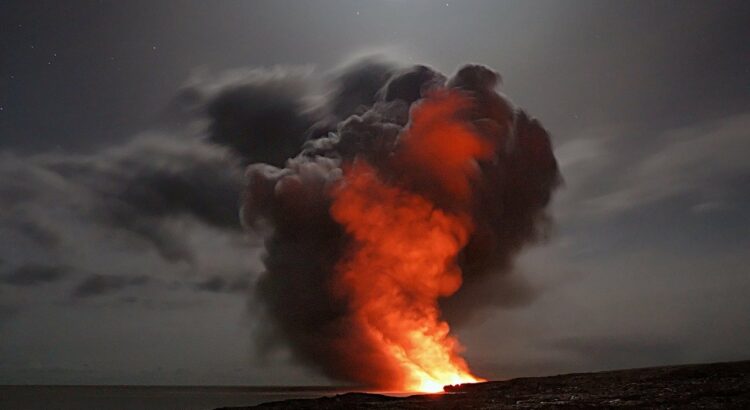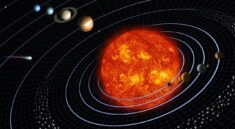Our planet Earth is made up of 4 layers: crust, mantle, outer core and inner core. The crust is the outermost layer which we can see at the top. It is made of tectonic plates and is thinnest in the ocean areas and thickest at the mountainous regions. The layer below the crust is the mantle which has high temperatures and consists of semi molten rocks called magma which is hard at the top and become soft as you move towards the Earth’s core. When there is a rupture in the Earth’s crust, the hot magma beneath the crust escapes and flows out as an orange yellow liquid which is extremely hot. The rupture in the crust which allows the magma to flow is known as a volcano. Volcanoes have always interested the scientists and geologists because they represent an interesting phenomenon that occurs on Earth and it is very difficult to study them because of their high temperatures. We know little about them and much remains to be explored. Here are a few facts about volcanoes that will interest you.
- A volcano has a pool of molten rock called the magma chamber beneath it and erupts when the pressure builds up inside this chamber. A volcanic eruption of a high magnitude can trigger earthquakes, tsunamis, mudslides, avalanches and rock falls. One of the most destructive tsunamis recorded in history was caused in 1883 due to the eruption and collapse of the volcano Krakatoa in Indonesia.
- The volcanoes played an active role in creating the seas and the surface of the Earth as we know it today. More than 80% of the Earth’s surface is made out of volcanic activity. The mountains and the sea floor are a result of the movement of tectonic plates and countless earthquakes and volcanic eruptions. The gases released during a volcanic eruption were integral in forming the Earth’s atmosphere.
- Volcanoes are of three kinds: Shield volcanoes, Stratovolcanoes and Cinder cone volcanoes. Shield volcanoes spew lava of low viscosity because of which they are very wide. Stratovolcanoes have lava of different kinds and grow to huge heights. Cinder cone volcanoes and rather short with their height being around 400 m and their eruptions are usually short lived.
- Among the facts about volcanoes, a fun fact is that they can grow very quickly. The Cinder cone volcano Paricutin in Mexico first appeared on February 20, 1943 and grew about 5 stories tall in a week. Within a year it grew to a height of 336 m which is very quick as per geological standards.
- A horse shoe shaped Pacific Ring of Fire surrounding the Pacific Ocean contains the maximum active volcanoes and are marked by high seismic activity. Also known as the Circum Pacific Belt, this ring contains more than five hundred active volcanoes including Mount St. Helens.
- The Earth’s largest active volcano is Mauna Loa in Hawaii which is 4169 m tall and last erupted in 1984.
- There are volcanoes on other planets too. The tallest volcano of the Solar System is not on earth but on Mars. Olympus Mons is a shield volcano present on Mars which 550 km wide and 27 km high. Its enormity has been attributed to the presence of a single large hotspot that has been spewing lava for billions of years making it as big as it is today.
- Another fun facts about Volcanoes are that they don’t just occur on land, but occur under the water too. The fissures and vents under the sea or ocean through which magma can erupt are known as submarine volcanoes. They are usually located near the edges of the tectonic plates known as mid ocean ridges. Underwater volcanoes are difficult to detect and much needs to be learnt about them.


